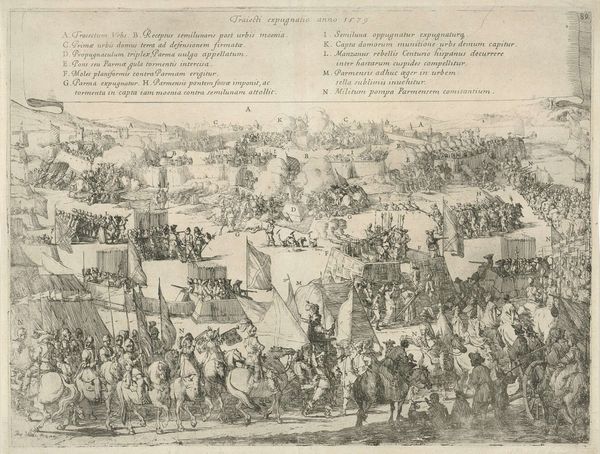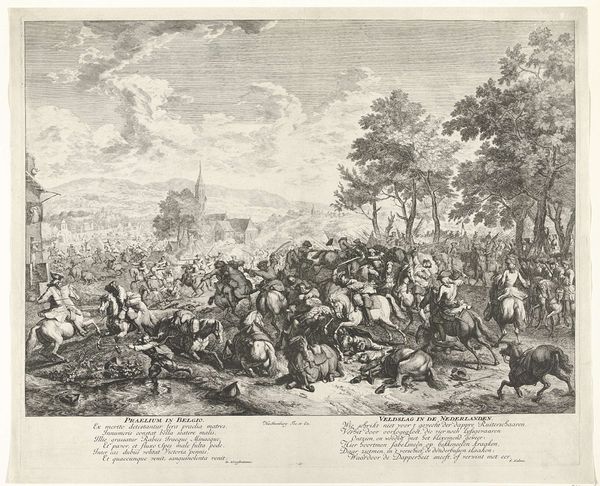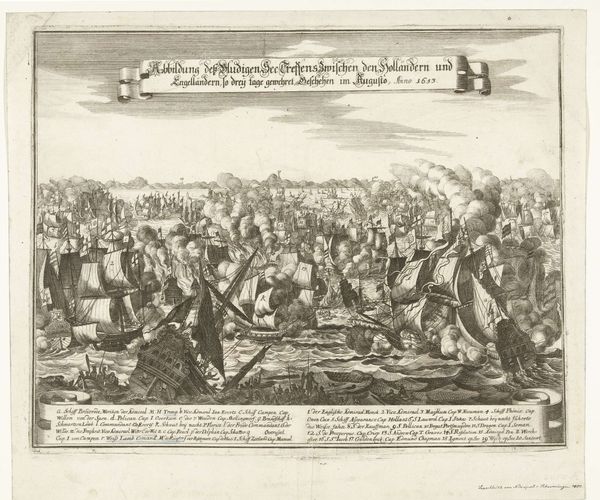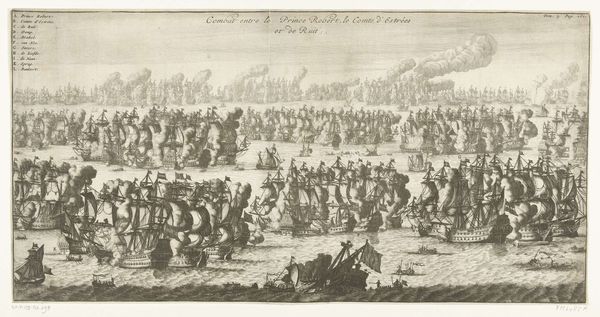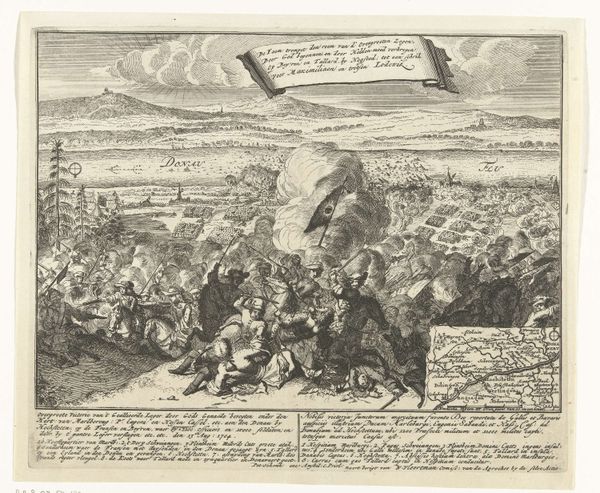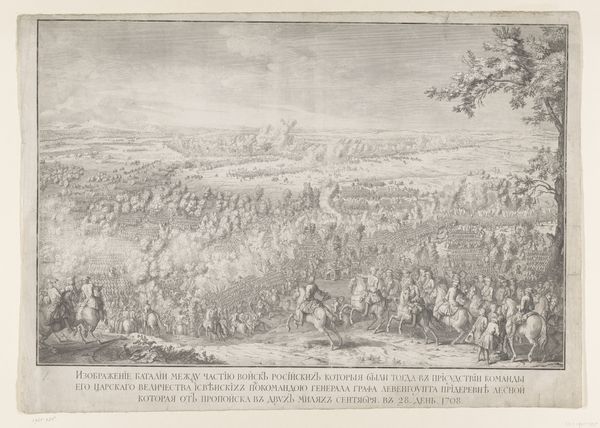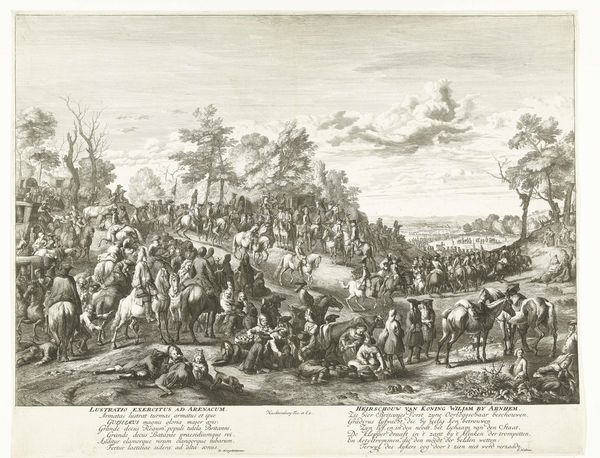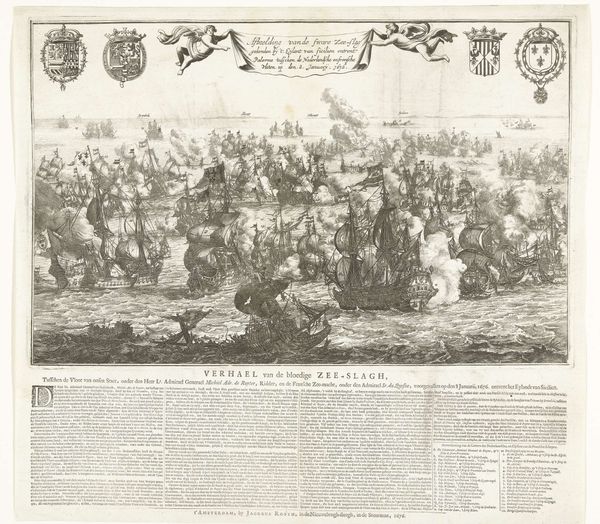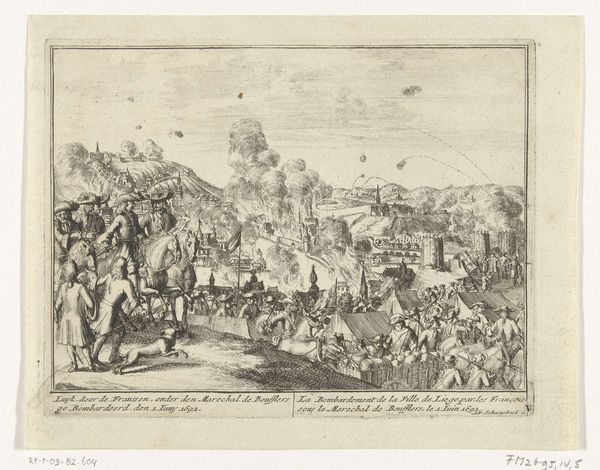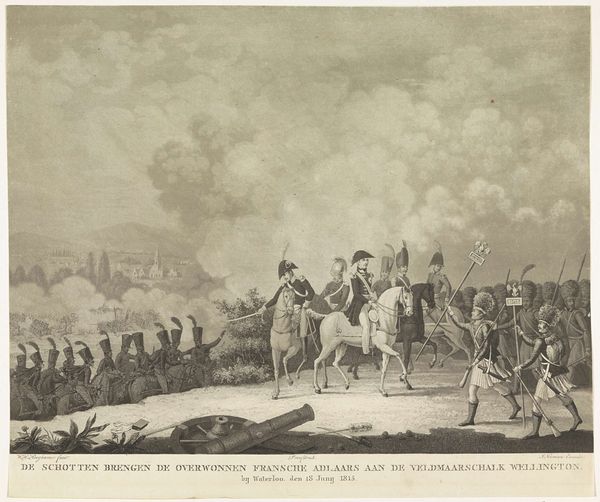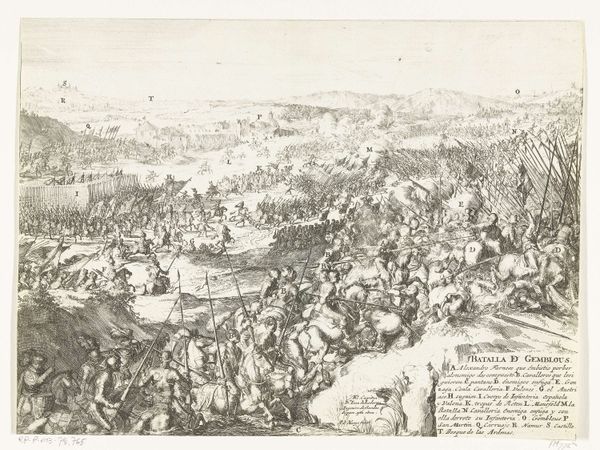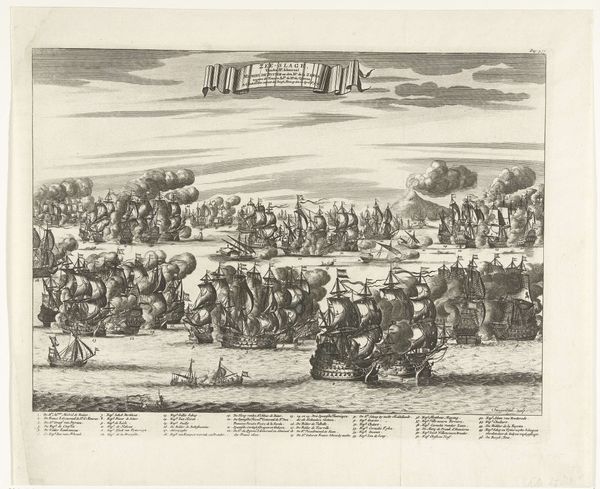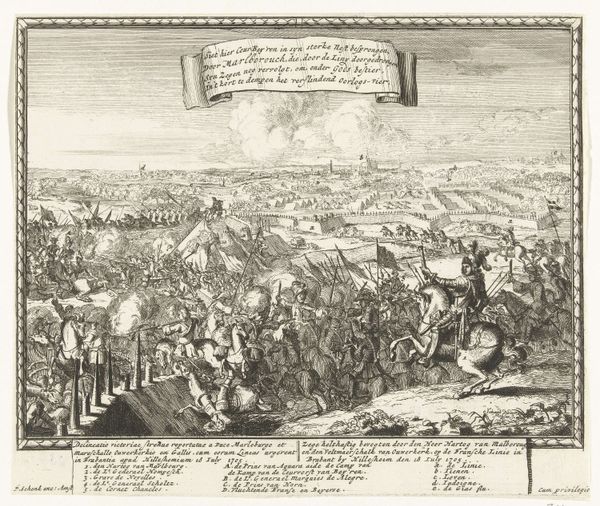
print, engraving
#
baroque
# print
#
old engraving style
#
landscape
#
history-painting
#
engraving
Dimensions: height 275 mm, width 360 mm
Copyright: Rijks Museum: Open Domain
Curator: At first glance, I’m struck by the sheer chaos rendered in monochrome. It feels less like a celebration of victory and more a document of destruction, despite its scale. Editor: Indeed. This engraving, "Zeeslag bij Malaga, 1704", or "Sea Battle of Malaga, 1704," created anonymously in 1704, offers us a fascinating lens into early 18th-century maritime conflict. Located here at the Rijksmuseum, it provides rich historical and political context. The scene illustrates the naval battle near Málaga, during the War of the Spanish Succession, a war of shifting European power dynamics. Curator: That political element is essential. Looking closer, beyond the plumes of smoke and detailed ships, one notices the almost absurd dance between national identity and imperial ambition enacted upon the stage of war. Who gains? Who loses beyond lives, beyond ships? Editor: The very act of commissioning and distributing this print was part of shaping public opinion about the conflict. How imagery, especially those showing Dutch victories, became political tools. Engravings like this served a specific public function of myth-making for a Dutch population hungry for narratives that would consolidate their power and solidify identity. Curator: Myth-making, yes, but let’s not forget that these depictions also reinforce hierarchies. They highlight the power structures of the time—who commissions, who controls the narrative, and whose experiences are completely erased? Where are the ordinary seamen, the colonial subjects forced into service? Editor: You’re absolutely correct. The artist likely focused on the grandeur of naval combat, on these elaborate vessels as national symbols, at the expense of portraying the individual human stories within the war. It reflects that social and historical gaze we cannot ignore. Curator: A sobering, and necessary, lens through which to view this turbulent snapshot in time. This artwork reveals more than the chaos of conflict—it underscores the critical and ongoing conflict around control and power. Editor: Thank you. Looking at the composition and distribution of prints, the museum acts as a vessel, preserving collective memory by placing imagery in the context of time and place.
Comments
No comments
Be the first to comment and join the conversation on the ultimate creative platform.
